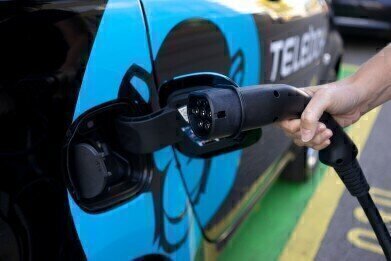Columns (GC)
How Can Chromatography Help with Hydrogen Production?
Oct 11 2021
Hydrogen is hailed by many as the fuel of the future. But like any emerging fuel source, it comes with its teething problems. One of the biggest hurdles faced by hydrogen at present is the cost.
Using existing technology, hydrogen production costs are much higher than conventional fuels and energy sources. The result is a higher cost for end users, which makes it simply impractical.
Thankfully, researchers at the Institute of Nano Science and Technology (INST) may have the answer…
Solar-powered hydrogen
INST researchers claim to have developed a prototype reactor, measuring around one square metre, that operates using natural sunlight to produce 6.1 litres of hydrogen in just eight hours.
Using carbon nitrides as a catalyst, the reactor generates electrons and holes when sunlight falls on its organic semiconductor. Those electrons reduce protons to produce hydrogen, with holes consumed by sacrificial chemical agents. Any holes which aren’t consumed will recombine with electrons.
Hydrogen production occurs within the reactor when it’s exposed to natural sunlight, which the team has optimised with the most effective hours of sunlight. This is then quantified using gas chromatography. The use of similar methods for the analysis of other fuels is discussed in the article, ‘Group-Type Analysis in Jet Fuel and Diesel by Flow Modulated GCxGC-FID’.
Is hydrogen renewable?
Given that it’s the most abundant element in the universe, it’s no surprise that hydrogen is found in a diverse array of resources on Earth. The challenge, as above, is producing or extracting it.
If hydrogen is produced from fossil fuels, it’s not particularly eco-friendly. Similarly, water can be split into hydrogen and oxygen using technology powered by electricity, which makes the end product non-renewable.
On the other hand, the INST team is using sunlight exposure to power their reactor. That makes the hydrogen produced by the reactor completely renewable, providing a sustainable source of power.
The start of a hydrogen revolution…
Hydrogen produced using the prototype reactor – and larger subsequent models – can be used as electricity through fuel cells. This can then be used to power anything from small appliances to electric vehicles. It’s hoped the research from INST could be the first step towards large-scale production of hydrogen as a fuel. That’s especially true with India’s 2030 target for renewable energy set at 450GW.
Lead scientist on the project, Dr Kamalakannan Kailasam suggests that this method of hydrogen solution presents a realistic solution to meet renewable energy demand. “It is the long-term persistent solution for the growing renewable energy needs and a low-cost economic process which will benefit society in the longer term,” he explained. “Thus significant efforts from scientists towards achieving this goal are utmost necessary and urgent need-of-the-hour.”
Digital Edition
Chromatography Today - Buyers' Guide 2022
October 2023
In This Edition Modern & Practical Applications - Accelerating ADC Development with Mass Spectrometry - Implementing High-Resolution Ion Mobility into Peptide Mapping Workflows Chromatogr...
View all digital editions
Events
ACS National Meeting - Fall 2024
Aug 18 2024 Denver, CO, USA
Sep 04 2024 Chiba, Tokyo, Japan
Sep 04 2024 University of Warwick, Coventry, UK
Sep 10 2024 Rockville, MD, USA
Plastics Recycling World Expo Europe
Sep 11 2024 Brussels, Belgium














